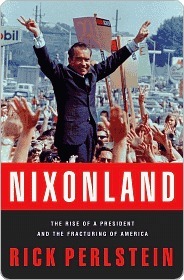More on this book
Community
Kindle Notes & Highlights
Read between
October 11 - November 9, 2017
They couldn’t imagine that the old buffaloes in their back rooms might bear any wisdom worth preserving. They never seemed to ponder whether the kind of candidate that could win majorities in open Democratic primaries, where activists were overrepresented, would always be the best ones to win over the full electorate—or to arrest the exile of working-class and Southern voters to a Nixonian Republican Party. They viewed “openess” and “participation” as ends in themselves, and presumed victory would follow.
And when the full commission met to sign off on their draft reforms, the staff bore a certain psychological advantage: it was hard to come out openly against openness.
Open was a magic word for reform Democrats. They were convinced the banning of the back rooms was what it would take to win in 1972. Richard Nixon understood things differently. His political operation was all back rooms.
“I have not yet thought through all the subtle ways in which we can keep the Democratic Party in a constant state of civil warfare,” Colson summed, “but I am convinced that with some imagination and creative thought it can be done.”
The media gave both charge and defense equal space; even the Post twinned their coverage of the MacGregor press conference with a sober-sided analysis piece of MacGregor’s baseless claims of McGovern ties to the violence against Nixon campaign offices. An astonishing watershed in American political history had passed: a major journalistic institution was willfully and cynically discredited by a president as if it were a rival political candidate—the Washington Post as Jerry Voorhis, or Helen Gahagan Douglas. And the president had no trouble getting away with it.


